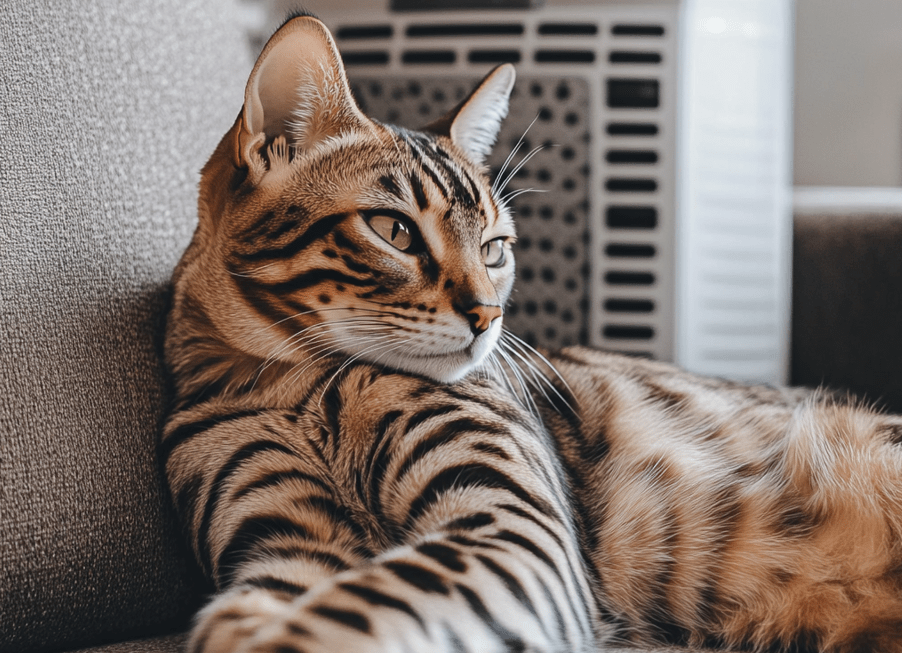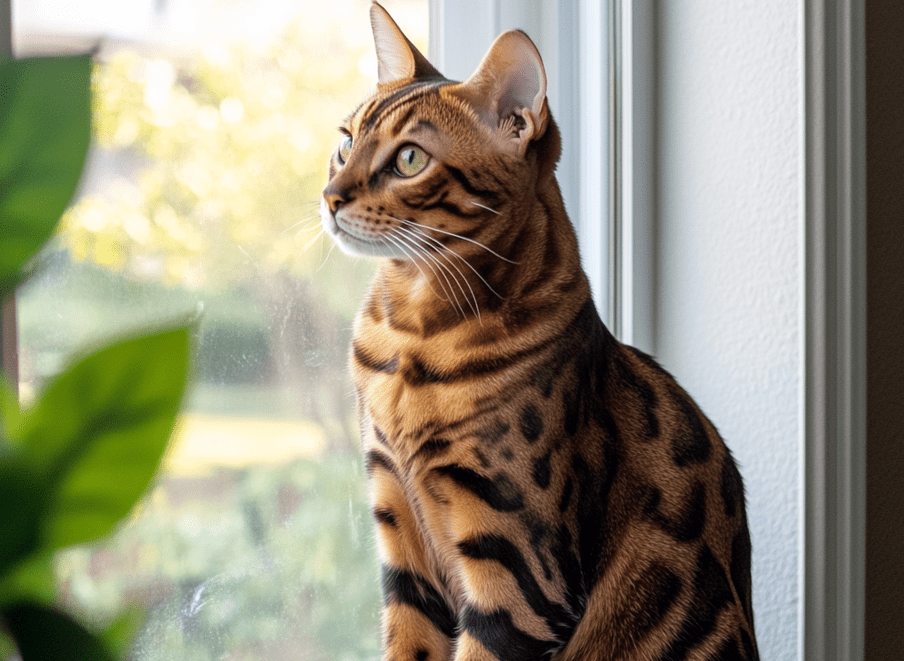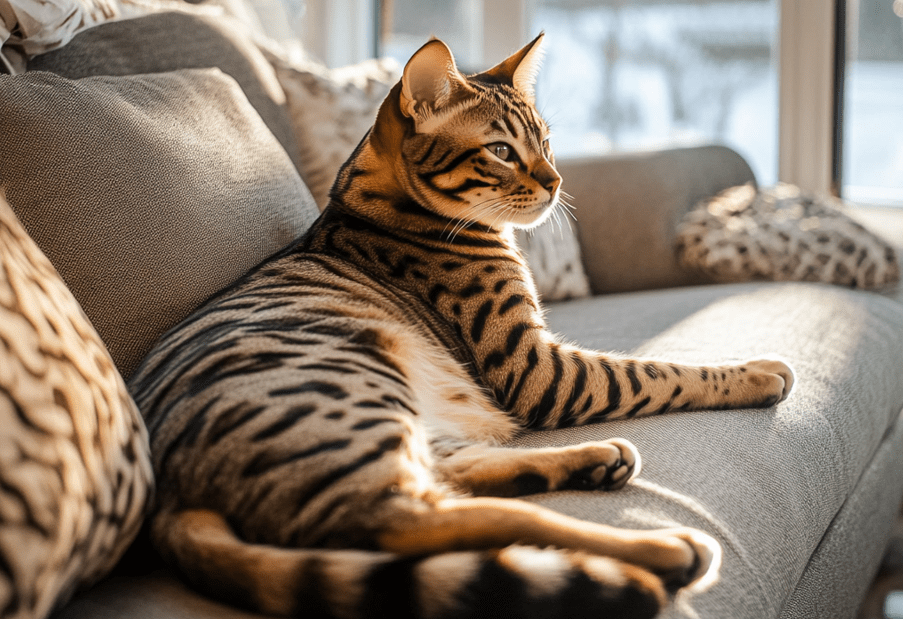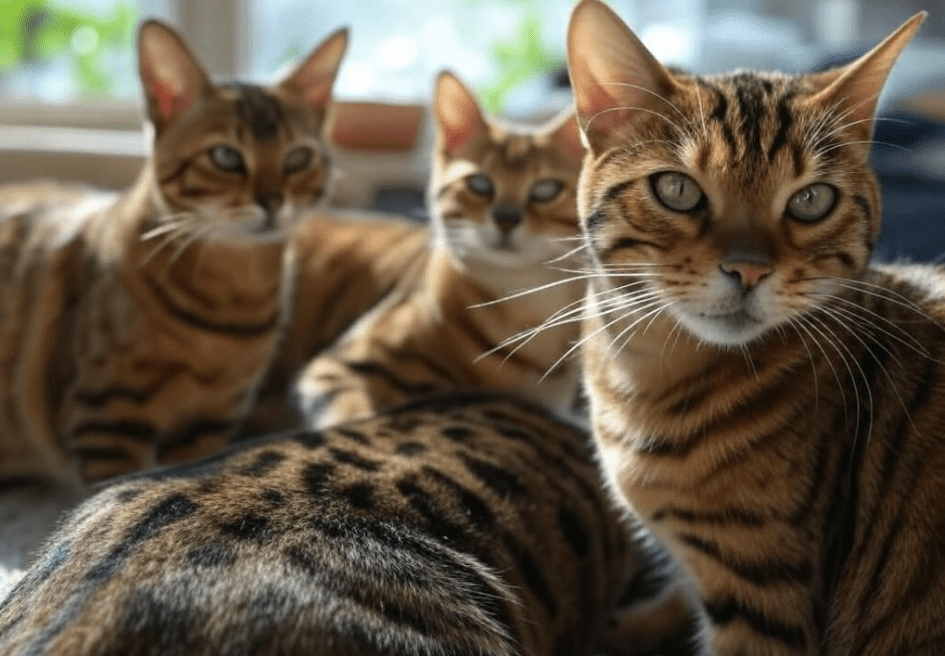
Bengal cats, with their stunning leopard-like coats and playful personalities, are a unique breed known for their affinity for water. Unlike most felines, many Bengal cats enjoy splashing in sinks, playing in fountains, or even joining their owners in the shower. Bathing a Bengal cat can be a rewarding experience, enhancing their coat’s shine and strengthening your bond. However, it requires careful preparation and technique to ensure safety and comfort. This comprehensive guide covers everything you need to know about how to safely bathe your Bengal cat, from preparation to post-bath care.
Why Bathe a Bengal Cat?
Bathing a Bengal cat isn’t always necessary, as cats are naturally fastidious groomers. However, there are several reasons why you might choose to bathe your Bengal:
Coat Maintenance: Regular baths can remove dirt, excess oils, and loose fur, keeping their distinctive coat glossy and healthy.
Skin Health: Bathing can help manage skin conditions, remove allergens, or reduce dander for allergy-prone households.
Odor Control: Bengals that explore outdoors or have litter box mishaps may need occasional cleaning.
Bonding Opportunity: For water-loving Bengals, bath time can be a fun, interactive experience that strengthens your relationship.
Show Preparation: If your Bengal participates in cat shows, regular bathing enhances their appearance for judging.
While Bengals are often more receptive to water than other breeds, improper bathing techniques can cause stress or injury. This guide provides step-by-step instructions to make bath time safe and enjoyable.
Understanding the Bengal Cat’s Love for Water
Bengal cats are descendants of the Asian leopard cat, a wild species known for hunting near water. This heritage gives Bengals a unique fascination with water, whether it’s drinking from a running faucet, pawing at a water bowl, or dipping into a bathtub. Their playful and curious nature makes them more likely to tolerate or even enjoy baths compared to other cats. However, each Bengal is an individual, and some may need gradual acclimation to bathing.
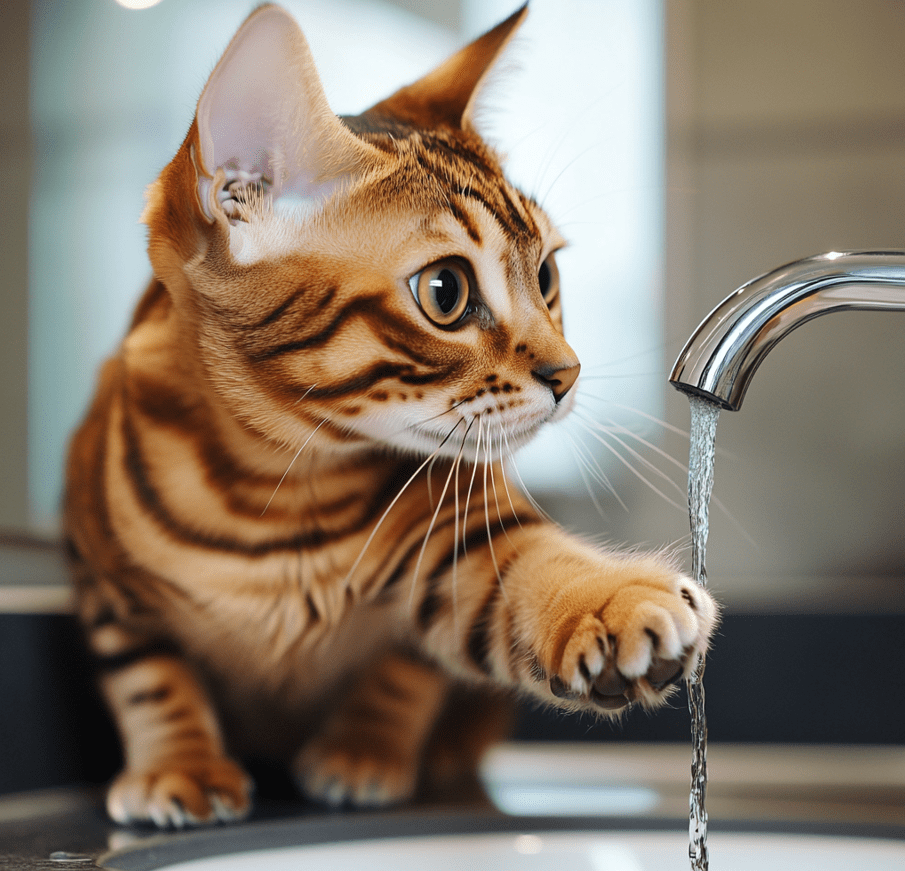
Factors Influencing Bathing Success
Personality: Confident, outgoing Bengals are more likely to embrace bath time, while shy or anxious ones may need extra patience.
Early Exposure: Bengals introduced to water as kittens are typically more comfortable with baths.
Environment: A calm, familiar setting reduces stress during bathing.
Owner’s Approach: Positive reinforcement and gentle handling make the experience enjoyable.
By tailoring your approach to your Bengal’s personality and preferences, you can turn bath time into a stress-free routine.
How Often Should You Bathe a Bengal Cat?
Bengal cats generally don’t need frequent baths due to their self-grooming habits. The ideal bathing frequency depends on several factors:
Indoor vs. Outdoor: Indoor Bengals may need baths every 2–3 months, while outdoor Bengals may require more frequent cleaning to remove dirt or pollen.
Skin or Coat Issues: Cats with allergies, dandruff, or oily coats may benefit from monthly baths, as advised by a veterinarian.
Show Schedules: Show Bengals may need weekly or biweekly baths to maintain a pristine coat.
Water Play: Bengals that frequently play in water may need occasional baths to prevent skin irritation from prolonged wetness.
Overbathing can strip natural oils from the coat, leading to dryness or irritation. Consult your veterinarian to determine the best bathing schedule for your Bengal.
Preparing to Bathe Your Bengal Cat
Proper preparation is key to a successful and safe bathing experience. Follow these steps to set the stage for a smooth bath.
1. Gather Supplies
Before starting, collect all necessary supplies to avoid interruptions:
Cat-Safe Shampoo: Use a veterinarian-recommended, hypoallergenic shampoo formulated for cats. Avoid human shampoos, which can irritate feline skin.
Conditioner (Optional): A cat-safe conditioner can enhance coat shine and reduce matting, especially for long-haired Bengals.
Non-Slip Mat: Place a rubber mat or towel in the sink or tub to provide traction and prevent slipping.
Towels: Have several soft, absorbent towels ready for drying.
Washcloth or Sponge: Use for gentle cleaning of the face and sensitive areas.
Pitcher or Handheld Sprayer: A sprayer with adjustable pressure is ideal for rinsing.
Brush: A slicker brush or grooming mitt helps remove loose fur before bathing.
Treats: Keep treats on hand for positive reinforcement.
Cotton Balls: Place in your Bengal’s ears to prevent water entry (optional).
Nail Clippers: Trim nails beforehand to reduce the risk of scratches.
2. Choose the Right Location
Select a bathing area that’s safe and comfortable for both you and your Bengal:
Sink: Ideal for smaller Bengals or kittens, as it’s easier to control water flow and access.
Bathtub: Suitable for larger Bengals, providing more space for movement.
Shower: If your Bengal enjoys running water, a shower with a handheld sprayer can work well.
Ensure the area is quiet, free from distractions, and at a comfortable temperature (warm, not drafty).
3. Acclimate Your Bengal to Water
If your Bengal is new to bathing, introduce water gradually:
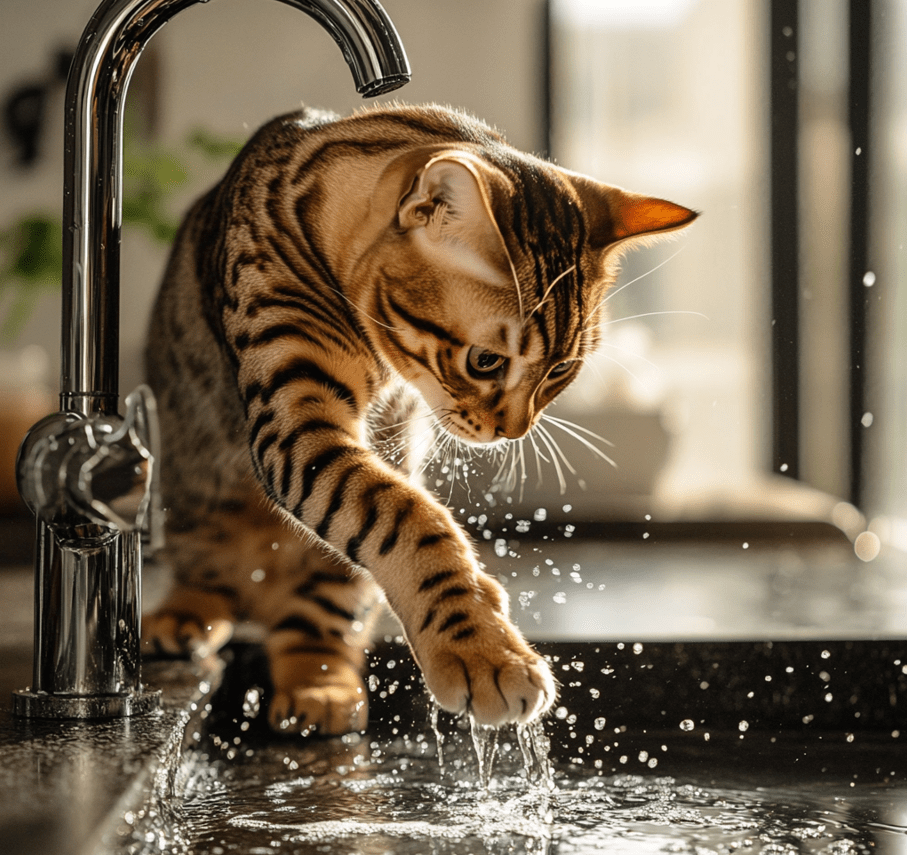
Start with Play: Let your Bengal play with a dripping faucet or shallow water in a bowl to build positive associations.
Use a Damp Cloth: Wipe your cat with a warm, damp cloth to simulate the bathing sensation.
Test the Bathing Area: Place your Bengal in the dry sink or tub with treats or toys to familiarize them with the space.
Patience during this phase can make your Bengal more receptive to bathing.
4. Trim Nails and Brush Fur
Trim Nails: Clip your Bengal’s nails a day or two before bathing to minimize scratches if they become startled.
Brush Thoroughly: Remove loose fur and mats to prevent clogs and ensure even shampoo distribution. Brushing also calms your cat and reduces shedding during the bath.
5. Check Water Temperature
Use lukewarm water (around 100°F or 38°C), similar to a baby’s bath. Test the temperature with your wrist to ensure it’s neither too hot nor too cold, as Bengals have sensitive skin.
Step-by-Step Guide to Bathing Your Bengal Cat
Follow these steps to bathe your Bengal cat safely and effectively:
Step 1: Set Up the Bathing Area
-
Place the non-slip mat in the sink or tub.
-
Fill the basin with 2–4 inches of lukewarm water, enough to cover your Bengal’s paws but not submerge them.
-
Keep all supplies within reach to maintain focus on your cat.
Step 2: Introduce Your Bengal to the Bath
-
Gently place your Bengal in the dry sink or tub, offering treats or praise to keep them calm.
-
If they’re hesitant, let them explore the area without water for a few minutes.
-
Speak in a soothing voice to reassure them.
Step 3: Wet the Coat
-
Use a pitcher or handheld sprayer to wet your Bengal’s coat, starting from the neck and moving downward. Avoid the face and ears to prevent discomfort.
-
Ensure the water penetrates the dense undercoat, but don’t soak them excessively.
-
If your Bengal resists, wet a washcloth and gently wipe their body instead.
Step 4: Apply Shampoo
-
Dilute the cat shampoo with water (per product instructions) to make it easier to rinse.
-
Apply a small amount to your hands or a washcloth and massage it into the coat, starting at the neck and working toward the tail.
-
Focus on areas prone to dirt, like the belly and legs, but avoid the face, eyes, and ears.
-
Be gentle to avoid stressing your Bengal or causing skin irritation.
Step 5: Rinse Thoroughly
-
Use lukewarm water to rinse out all shampoo, ensuring no residue remains, as it can irritate the skin.
-
Run your hands through the coat to check for soapy spots, especially in dense areas like the tail base.
-
If using a sprayer, keep the pressure low to avoid startling your Bengal.
Step 6: Clean the Face (Optional)
-
Use a damp washcloth (no shampoo) to gently wipe your Bengal’s face, avoiding the eyes and inner ears.
-
If needed, use a cat-safe facial wipe for sensitive areas.
Step 7: Apply Conditioner (Optional)
-
If using a conditioner, apply a small amount and massage it into the coat, following product instructions.
-
Rinse thoroughly to prevent buildup, which can attract dirt.
Step 8: Dry Your Bengal
-
Wrap your Bengal in a soft, absorbent towel and gently pat them dry. Avoid vigorous rubbing, which can cause matting or discomfort.
-
If your Bengal tolerates it, use a second towel to absorb excess water.
-
For faster drying, use a pet-safe blow dryer on the lowest heat and speed setting, keeping it at least 12 inches away to avoid burns or stress. Introduce the dryer gradually if your Bengal is unfamiliar with it.
-
Allow your Bengal to air-dry in a warm, draft-free room if they dislike the dryer.
Step 9: Reward and Comfort
-
Offer treats, praise, or playtime to reinforce a positive experience.
-
Brush the coat once dry to restore its natural shine and remove any remaining loose fur.
-
Monitor your Bengal for signs – Swamp signs of stress, such as hiding or excessive grooming, which could indicate discomfort from the bath.
Post-Bath Care for Your Bengal Cat
After bathing, take steps to ensure your Bengal’s comfort and health:
Monitor Skin Health: Check for redness, dryness, or irritation in the days following the bath. Consult a vet if you notice persistent issues.
Groom Regularly: Brush your Bengal every few days to maintain coat health and prevent matting.
Clean the Bathing Area: Disinfect the sink or tub to remove fur and bacteria, especially if your Bengal has skin conditions.
Observe Behavior: Watch for signs of stress or illness, such as reduced appetite or lethargy, which could indicate an underlying issue exacerbated by the bath.
Troubleshooting Common Bathing Challenges
Even water-loving Bengals can present challenges during bath time. Here’s how to handle common issues:
1. Resistance or Fear
Solution: Go slowly, using treats and toys to create positive associations. Break the process into shorter sessions (e.g., wetting one day, shampooing the next) to build tolerance.
Tip: Use a calm, confident tone and avoid forcing your Bengal, as this can increase stress.
2. Scratching or Escaping
Solution: Wear long sleeves and gloves if needed, and keep a firm but gentle grip. Use a harness or towel wrap to secure your Bengal if they try to jump out.
Tip: Trim nails beforehand and have a second person assist if your Bengal is particularly squirmy.
3. Water in Ears or Eyes
Solution: Place cotton balls in the ears (remove after bathing) and avoid direct water flow to the face. Use a washcloth for facial cleaning.
Tip: Dry the ears gently with a towel to prevent moisture buildup, which can lead to infections.
4. Excessive Shaking or Shivering
Solution: Keep the room warm and wrap your Bengal in a towel immediately after bathing. Use a pet-safe dryer if they tolerate it.
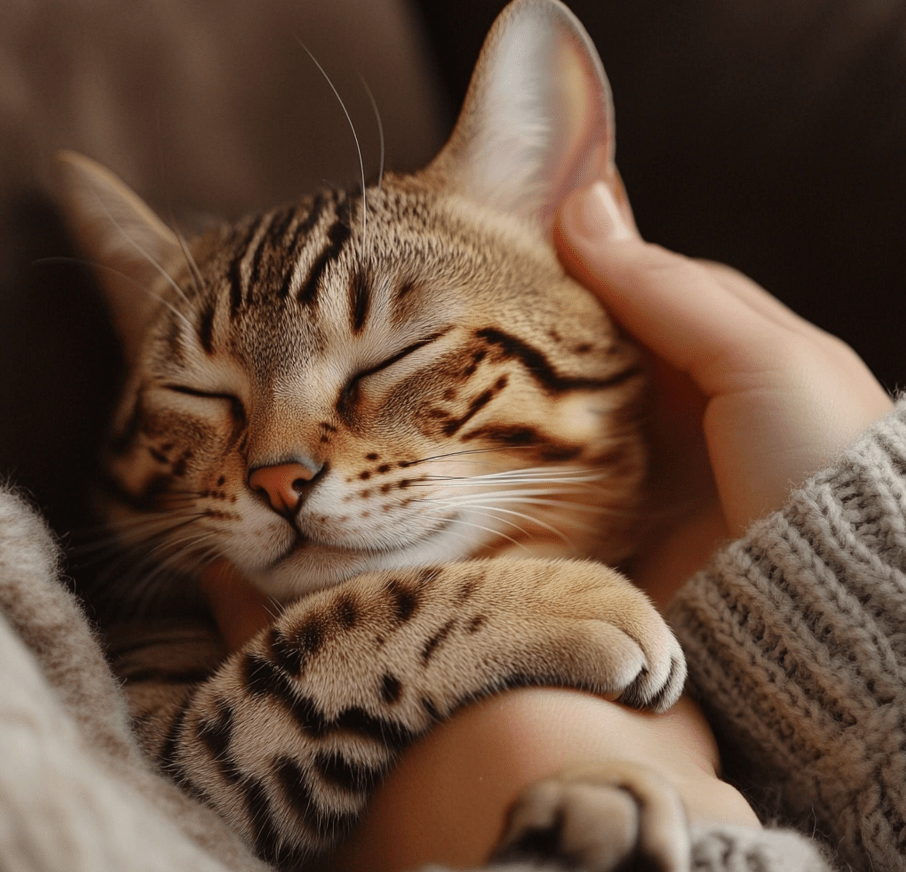
Tip: Offer a cozy blanket or heated pet bed to help them warm up.
5. Post-Bath Stress
Solution: Provide a quiet space with familiar items (e.g., their bed or favorite toy) to help them relax. Engage in gentle play or cuddling once they’re calm.
Tip: Monitor for prolonged stress (e.g., hiding for hours) and consult a vet if it persists.
Special Considerations for Bengal Cats
Bengals have unique traits that influence their bathing needs:
Dense Coats: Their short, dense coats require thorough rinsing to remove all shampoo, as residue can cause irritation.
High Energy: Bengals may become restless during baths, so keep sessions short and engaging.
Sensitive Skin: Some Bengals are prone to allergies or skin sensitivities, so use hypoallergenic products and monitor for reactions.
Show Bengals: If your Bengal competes, follow breed standards for grooming and consult your breeder or show guidelines for product recommendations.
When to Consult a Veterinarian
While bathing is generally safe, certain situations warrant professional advice:
Skin Irritation: Persistent redness, flaking, or sores after bathing may indicate an allergy or infection.
Behavioral Changes: If your Bengal becomes withdrawn, aggressive, or stops grooming after baths, a vet or behaviorist can assess underlying issues.
Frequent Bathing Needs: If your Bengal requires frequent baths due to skin conditions or odors, a vet can diagnose and treat the root cause.
Injuries: If you or your Bengal are scratched or injured during bathing, seek medical attention to prevent infection.
Preventing Bath-Related Stress in Bengal Cats
To make bathing a positive experience long-term, incorporate these preventive strategies:
Start Early: Introduce kittens to water and grooming to build lifelong comfort.
Use Positive Reinforcement: Pair baths with treats, toys, or play to create happy associations.
Maintain Routine: Bathe your Bengal on a consistent schedule to normalize the process.
Monitor Environment: Keep the bathing area calm, quiet, and free from sudden noises or disruptions.
Check Products: Ensure all shampoos and conditioners are cat-safe and free from harsh chemicals.
Conclusion
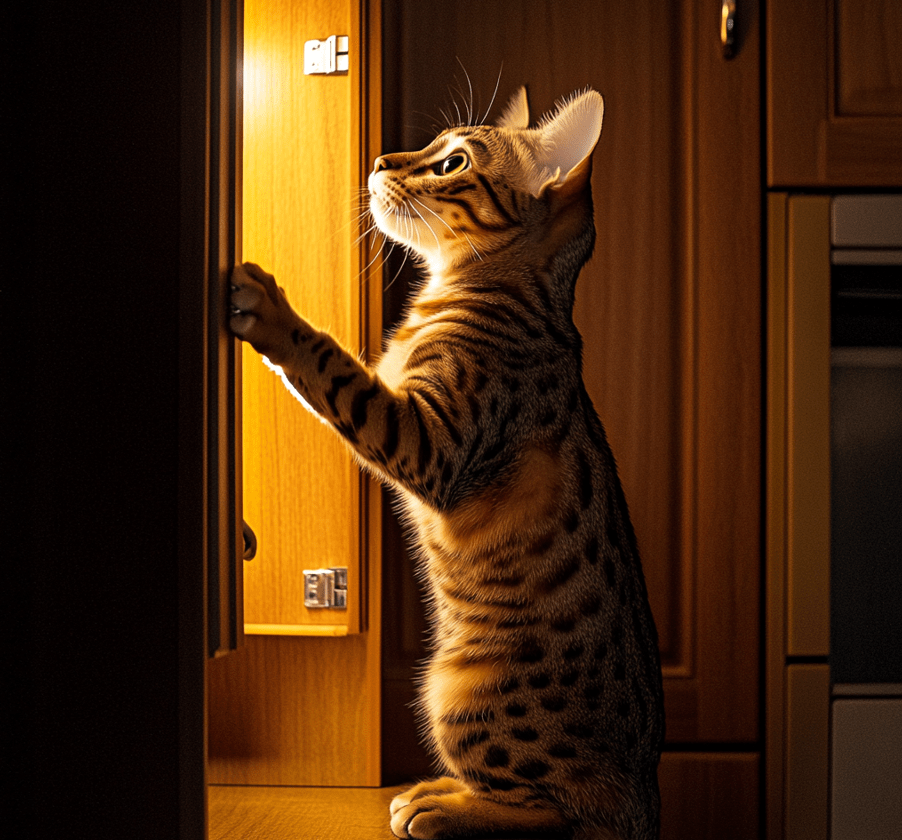
Bathing your water-loving Bengal cat can be a fun and rewarding experience when done safely and thoughtfully. By preparing properly, using gentle techniques, and tailoring the process to your Bengal’s unique personality, you can keep their coat gleaming and their spirits high. From choosing the right products to mastering the art of rinsing and drying, this guide equips you with the tools to make bath time a breeze. With patience and care, you’ll not only maintain your Bengal’s stunning appearance but also deepen the bond you share with your feline friend.


